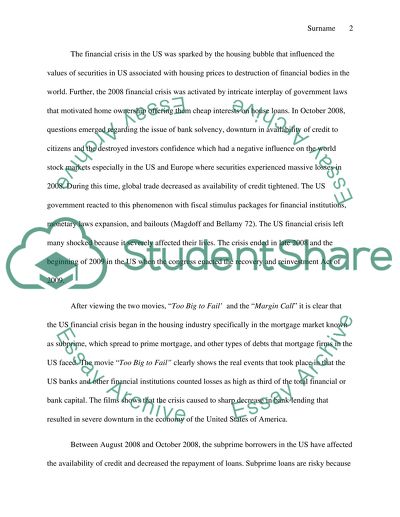Cite this document
(“Financial Crisis of 2008 Research Paper Example | Topics and Well Written Essays - 2000 words”, n.d.)
Financial Crisis of 2008 Research Paper Example | Topics and Well Written Essays - 2000 words. Retrieved from https://studentshare.org/macro-microeconomics/1462835-2008-financial-crisis
Financial Crisis of 2008 Research Paper Example | Topics and Well Written Essays - 2000 words. Retrieved from https://studentshare.org/macro-microeconomics/1462835-2008-financial-crisis
(Financial Crisis of 2008 Research Paper Example | Topics and Well Written Essays - 2000 Words)
Financial Crisis of 2008 Research Paper Example | Topics and Well Written Essays - 2000 Words. https://studentshare.org/macro-microeconomics/1462835-2008-financial-crisis.
Financial Crisis of 2008 Research Paper Example | Topics and Well Written Essays - 2000 Words. https://studentshare.org/macro-microeconomics/1462835-2008-financial-crisis.
“Financial Crisis of 2008 Research Paper Example | Topics and Well Written Essays - 2000 Words”, n.d. https://studentshare.org/macro-microeconomics/1462835-2008-financial-crisis.


